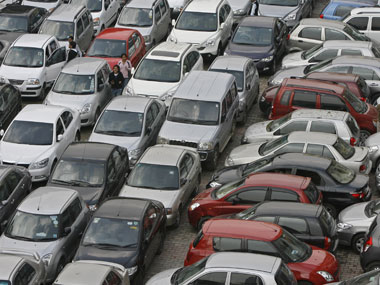With interest rates at such high levels, is it any wonder that ordinary borrowers are shying away from taking home and car loans?
A recent note by ratings agency Crisil pointed out home loan borrowers could be saddled with an additional burden of Rs 6,000 crore in the form of higher equated monthly instalments (EMIs) because of higher interest rates and the reintroduction of teaser loans by various banks.
Teaser loans, which account for an estimated 25 percent of the of Rs 5,10,000 crore housing loan industry, were introduced in early 2009 to boost cooling home loan demand. “Teaser loans, taken by home loan borrowers, would get reset to market rates, which would be relatively high, from April 2012,” Crisil said.
[caption id=“attachment_105763” align=“alignleft” width=“380” caption=“While the interest rate hikes have not been fully passed on by automobile finance companies to car buyers, uncertainty over the timing and extent of when those costs will be passed on is likely to keep demand subdued. Reuters”]
 [/caption]
[/caption]
The Reserve Bank of India has hiked policy rates 12 times in the past 18 months. The reference floating rate for the home loan industry has jumped by 200-250 basis points during this period, translating into an average increase of 15 percent in EMIs, according to the ratings agency.
Buying a home is not the only form of asset purchase that is becoming increasingly difficult for consumers.
They’re also having second thoughts about becoming car owners. The cost of owning a car has also jumped significantly - 12-14 percent - because of frequent increases in fuel prices and interest rates. Petrol prices have jumped by 37 percent since the transport fuel’s prices were de-regulated in June 2010. Crisil estimated that the fuel cost of driving a typical compact car had increased significantly by 30-35 percent during 2010-11.
Impact Shorts
More ShortsWhile the interest rate hikes have not been fully passed on by automobile finance companies to car buyers, uncertainty over the timing and extent of when those costs will be passed on is likely to keep demand subdued, according to industry observers.
Indeed, industry experts now expect car sales to report an anaemic 2-4 percent growth this year, after last year’s sizzling 30 percent jump.
This despite offering a slew of discounts and other incentives to lure buyers into the showrooms. Even property developers are reportedly doling out special incentives for potential customers (although cuts in house prices are not evident yet). Nevertheless, since up to 70 percent of cars and possibly a higher proportion of homes are bought with the help of loans, it’s unlikely that such freebies will do much to stir up sales sustainably.
The bad news is , interest rates don’t look like they’re coming down in a hurry. In fact, the bets are on another 25 basis points hike at the RBI’s policy meeting on October 25. Even if the central bank governor holds off on raising rates, there’s little chance the central bank will be lowering rates in the near future.
It looks like for borrowers, the pain on interest rates is not going away any time soon.
)